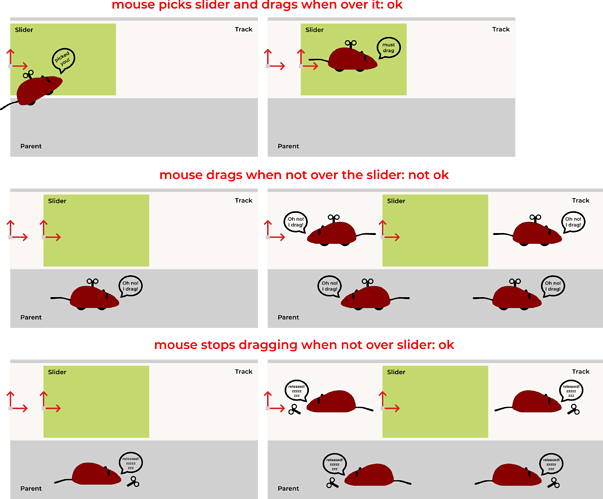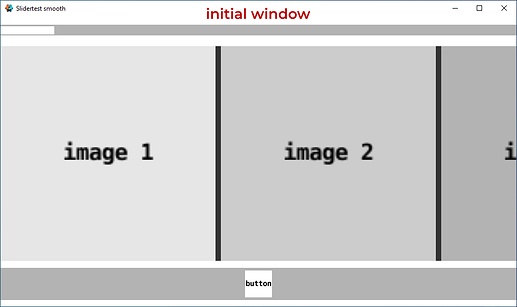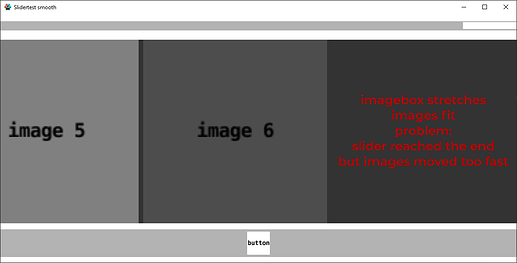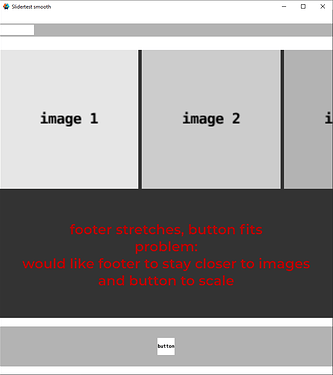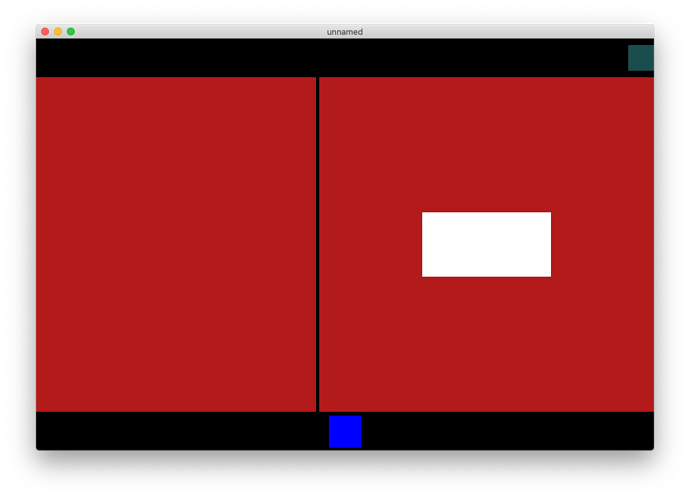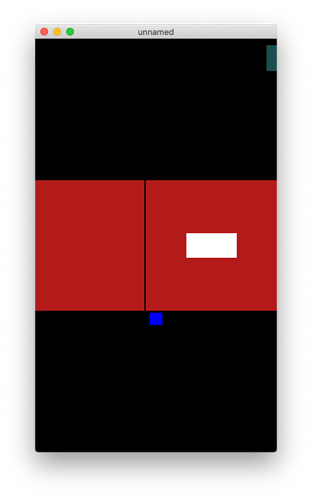Hello all,
I have made a slider that works really smoothly.
It sits in a slider track gui box that is set to stretch to allow for window resizing. Both slider and track are children of a root gui box, that is also set to stretch. Sliding is confined to the x-axis and all pivots are set to west.
There is still a small problem: I’d like the dragging to stop when the mouse leaves the slider or maybe a slightly larger area around it – as if it was released.
But the parenting leads to problems with the coordinates, especially when the window is stretched and so the mouse keeps dragging when it is no longer over the slider.
I have tried for some time now to solve this, searched the forum, looked at several examples and extensions.
So far, my calculations are not quite working. Could someone please give me a hint to get my maths right?

